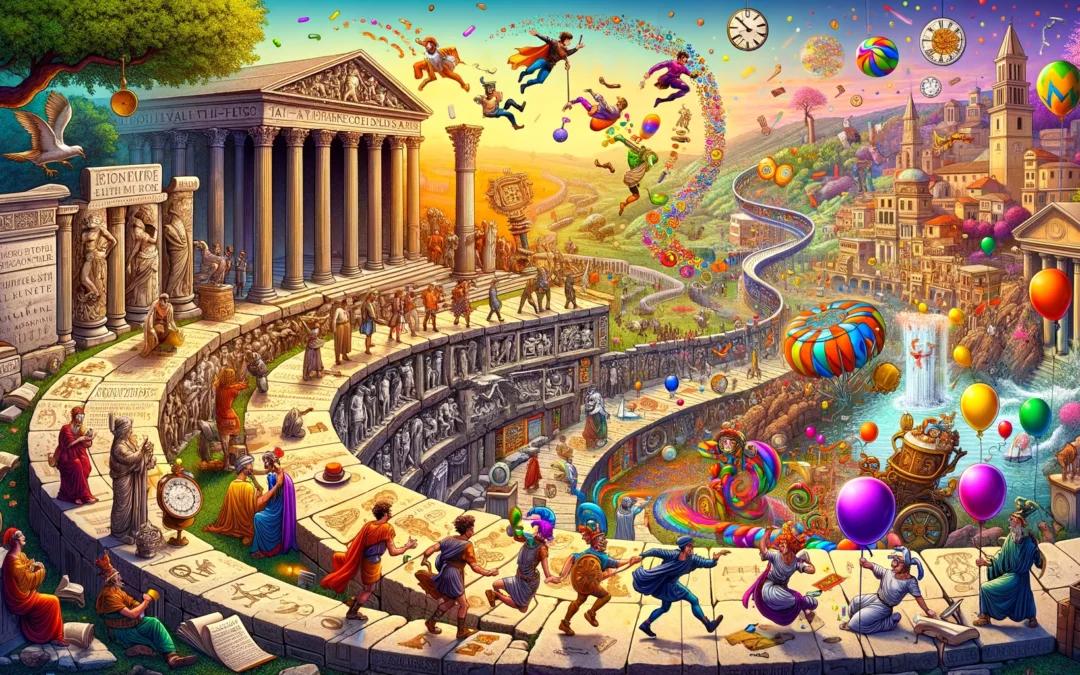As we delve into the intriguing connection between the Julian calendar and April Fool’s Day, we uncover a fascinating tale of how the measurement of time and the human inclination for humor and mischief intersected in a peculiar way.
The Julian Calendar
The Julian calendar, named after the Roman general and statesman Julius Caesar, was introduced in 45 BCE. It aimed to rectify the inaccuracies of the previous Roman calendar, which had fallen out of sync with the solar year.
Leap Years and the Calendar Drift
Under the Julian calendar, a year consisted of 365.25 days, with an extra day added every four years to account for the fractional difference. However, this adjustment resulted in a slight overcorrection, causing a misalignment between the calendar year and the actual solar year.
The Emergence of April Fool’s Day
The misalignment of the Julian calendar’s dates with the changing seasons set the stage for the emergence of April Fool’s Day as a day of pranks and practical jokes. People celebrating New Year’s Day on a disconnected date became the targets of playful deception.
The Evolution of April Fool’s Day
Over time, the tradition of April Fool’s Day evolved and expanded, becoming more elaborate and widespread. Pranks and hoaxes became a hallmark of the day, embraced by different cultures and regions.
Global Celebration of April Fool’s Day
Today, April Fool’s Day is celebrated in various ways around the world. From harmless pranks played on friends and family to elaborate hoaxes perpetuated by media outlets and corporations, the day has become a global phenomenon of good-natured deception.
The Julian Calendar’s Impact
The implementation of the Julian calendar brought stability and accuracy to the Roman calendar system. It impacted agriculture, astronomy, religious festivals, trade, commerce, governance, and more.
The Legacy of the Julian Calendar
The Julian calendar’s enduring impact can be seen in the modern Gregorian calendar, which evolved from the Julian system. Its legacy serves as a testament to humanity’s quest for order and precision in measuring time.
The Origins of April Fool’s Day
April Fool’s Day predates the Julian calendar reform and has roots in ancient Roman festivals and regional customs. It has evolved into a global phenomenon, with different cultures adding their own unique twists to the festivities.
The Essence of April Fool’s Day
April Fool’s Day goes beyond pranks; it symbolizes our human desire for creativity, playfulness, and shared laughter. It reminds us to embrace moments of joy and camaraderie in a world often burdened by seriousness.
Our Complex Relationship with Time
Reflecting on the Julian calendar and April Fool’s Day invites us to ponder our complex relationship with time. It highlights the interplay between the scientific and the festive, the precise and the spontaneous.
The Lessons of the Julian Calendar and April Fool’s Day
These traditions teach us about adaptation, shared cultural practices, and the enduring human spirit that finds laughter in the face of the vast universe. They remind us to find delight in both the majestic and the unexpected moments of life.
The Historical Significance of Calendar Reforms
The Julian calendar’s flaws led to its replacement by the Gregorian calendar in 1582. This reform corrected the accumulated errors and brought the calendar back in sync with the natural cycles of the Earth and the Sun.
The Playfulness of April Fool’s Day
April Fool’s Day offers a lighthearted break from the seriousness of timekeeping. Engaging in pranks taps into our sense of humor and creativity, reminding us to find joy in the unexpected.
The Dance Between Time and Laughter
As we reflect on the Julian calendar and the whimsicality of April Fool’s Day, let us appreciate the intricate dance between our human attempts to measure time and the spontaneous moments that bring us laughter and joy.










